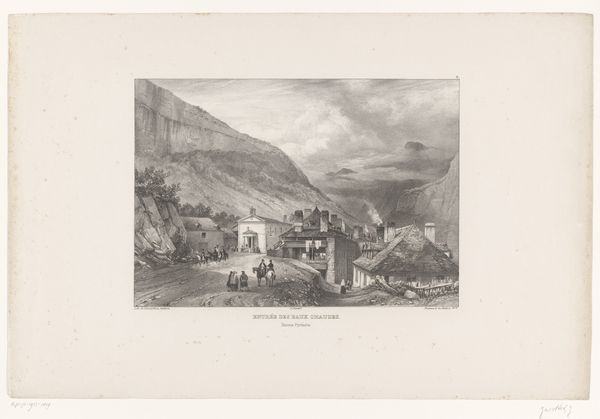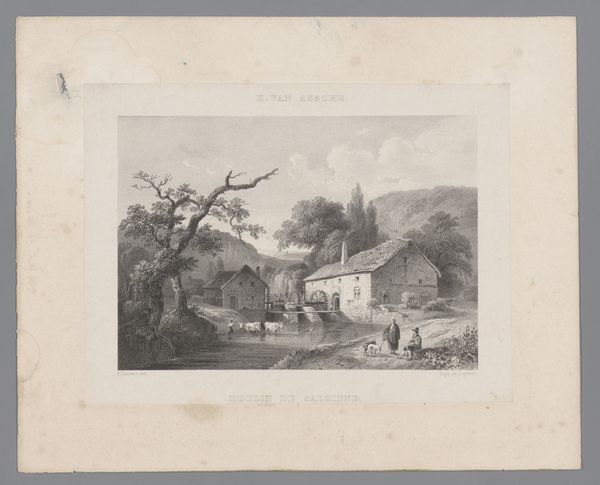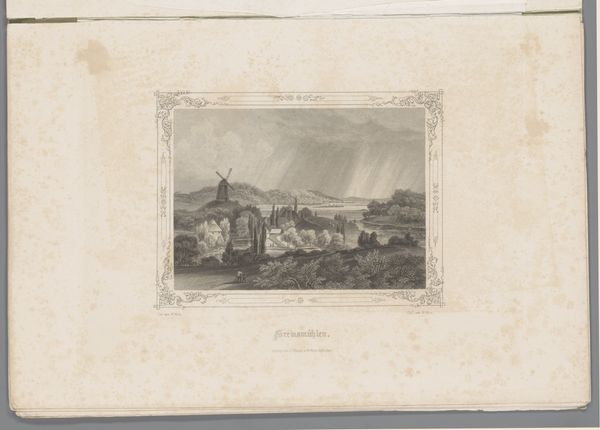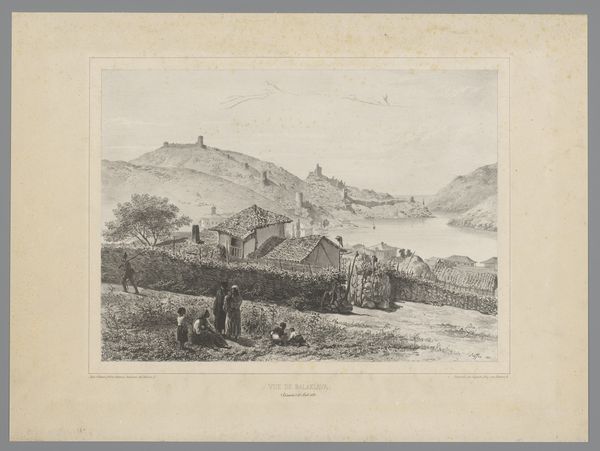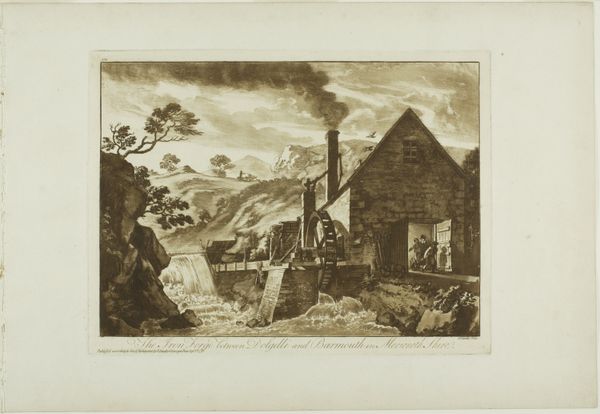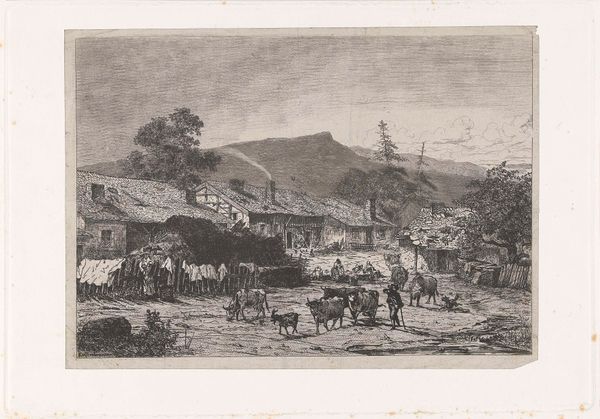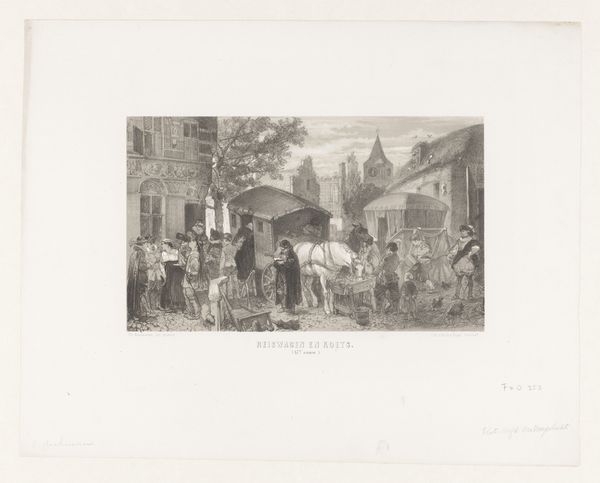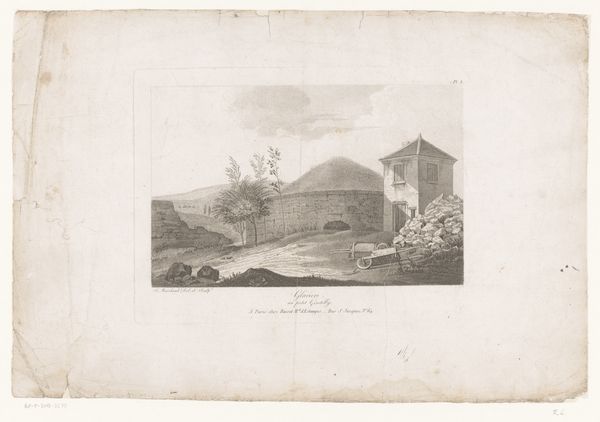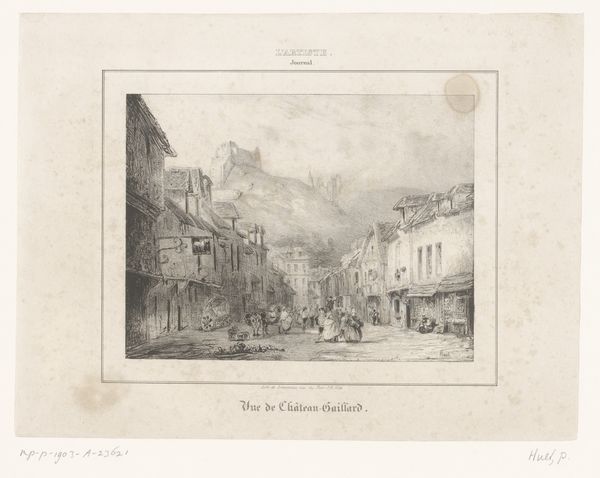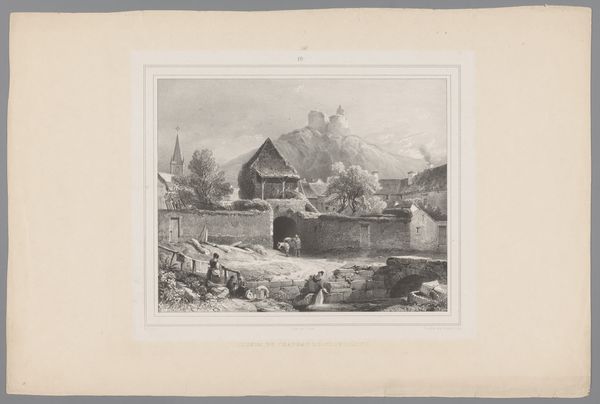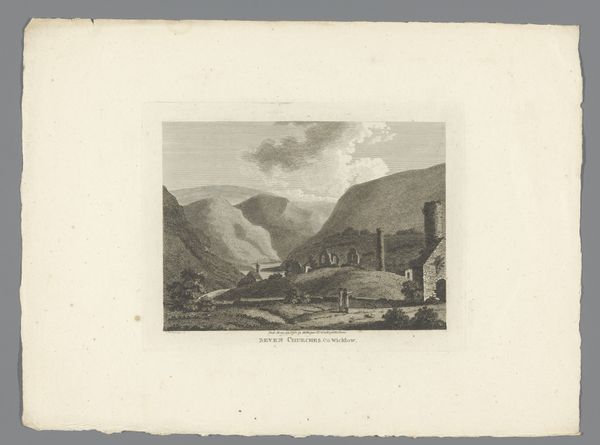
print, etching
# print
#
etching
#
landscape
#
geometric
#
cityscape
#
academic-art
Dimensions: height 274 mm, width 362 mm
Copyright: Rijks Museum: Open Domain
Curator: What we have here is a print by Paulus Lauters, likely created between 1816 and 1851. It is titled "View of a street in a mountain village with crucifix," made with etching, which gives us those fine lines. Editor: Immediately I'm struck by the somber tone. It’s a grey scene, softened by the fog and shadows, even a bit sentimental despite the detail in the architecture. Curator: Lauters situated this scene in a specific place – a mountain village, indicated below the image as "St. Savin.” The positioning of the crucifix forces us to reflect on the centrality of religion within these often-isolated communities. The print gives visibility to this social and physical landscape. Editor: It does feel a little staged, though. It lacks the immediacy I often look for in more radical representations. You've got these figures deliberately placed – look at that small group traveling in the lower half – perhaps reflecting traditional social roles, families, gender. Curator: Precisely! Lauters presents a romantic vision, sure, but consider who is consuming these images. The etching circulated among a bourgeois audience hungry for picturesque scenes, confirming certain perceptions about rural life and its social structures. How did industrialization reshape those values? How might that be connected to similar images across the Western world? Editor: It feels removed, which says something in itself, about art's purpose but also what escapes this picture, and whom this serves to reflect or to inspire. Curator: And let's not forget the role of academic art, which heavily influenced Lauters' technique and style. There's a deliberate classical composure that elevates the everyday to something more... dignified, but arguably less grounded in true realities of hardship in a mountain community. Editor: It prompts some vital discussions around visual representations. Looking at the architecture here in this space helps ground a different understanding of this type of work. Thank you for pointing this out. Curator: It shows how artistic depictions shape understandings of socio-economic disparities. This makes a close look so very interesting.
Comments
No comments
Be the first to comment and join the conversation on the ultimate creative platform.
